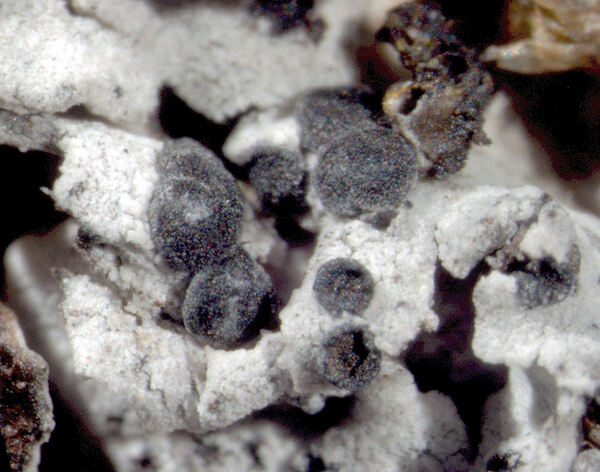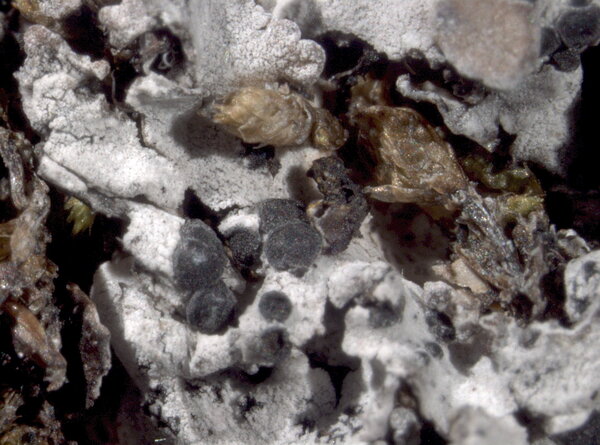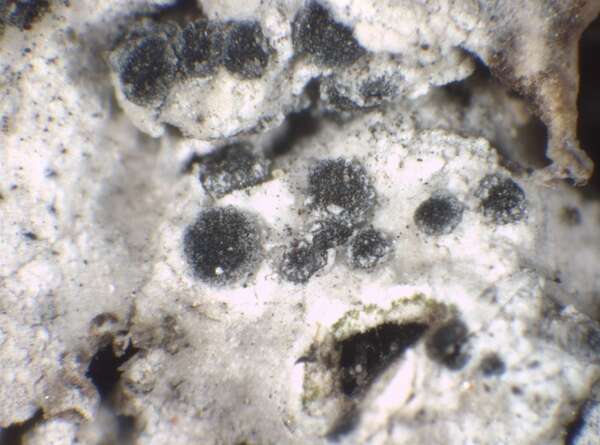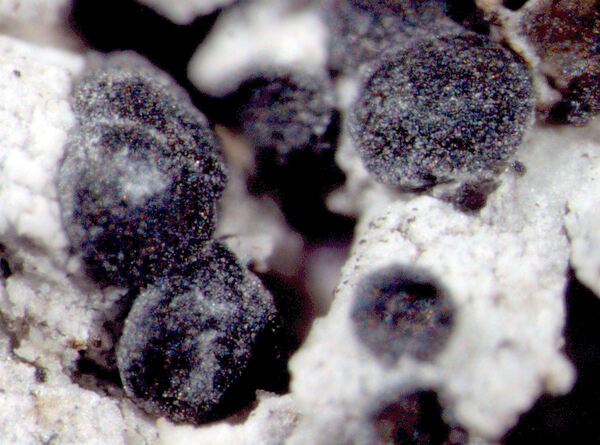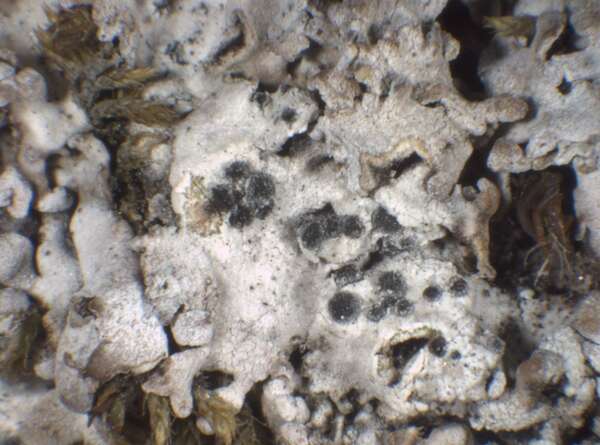Tetramelas pulverulentus (Anzi) A. Nordin & Tibell
Lichenologist, 37: 497, 2005. Basionym: Abrothallus pulverulentus Anzi - Cat. Lich. Sondr.: 116, 1860.
Synonyms: Arthonia muscigenae (Anzi) Jatta; Buellia convexa Th. Fr.; Buellia pulverulenta (Anzi) Jatta; Diplotomma pulverulentum (Anzi) D. Hawksw.; Karschia pulverulenta (Anzi) Körb.; Leciographa muscigenae (Anzi) Rehm
Distribution: N - TAA (Dalla Torre & Sarnthein 1902, Nascimbene & al. 2007b, Brackel 2016), Lomb (Brackel 2016), VA (Hafellner 1979, Brackel 2016). C - Marc (Nimis & Tretiach 1999, Brackel 2016), Abr (Nimis & Tretiach 1999, Brackel 2016), Sar (Brackel 2016, Brackel & Berger 2019).
Description: Thallus crustose, endokapylic, developing parasitically within species of Physconia, Physcia, and Anaptychia, mostly on Physconia muscigena, causing a necral discolouration on the host, but distinct within, of more dense and smaller cells than those of the host. Apothecia lecideine, black, (0.1-)0.3-0.7 mm across, at first immersed, then adnate, with a soon convex, sometimes pruinose disc and a soon excluded proper margin which, in young apothecia, is often grey-pruinose due to residues of the host's epinecral layer. Proper exciple dark brown throughout, paraplectenchymatous, often with inclusions of crystals; epithecium dark brown, N-; hymenium colourless, 55-77 μm high, not inspersed with oil droplets, I+ blue; paraphyses branched in upper part, the apical cell swollen, to 6 µm wide, with a brown cap; hypothecium brown to dark brown. Asci 8-spored, clavate to cylindrical-clavate, the apical dome K/I+ dark blue with a pale, conical-pointed apical cushion (axial mass), the wall I-, but the thin outer gel I+ blue, Bacidia-type. Ascospores (1-)3-septate, brown, ellipsoid, straight or slightly curved, with rounded ends, (14-)16-21(-23) x 6-9 μm, the wall slightly rugulate. Pycnidia rare, black, unilocular. Conidia bacilliform, 5-6 x c. 1 μm. Photobiont chlorococcoid. Spot tests: K-, C-, KC-, P-. Chemistry: without lichen substances.Note: a holarctic endoparasitical lichen (it grows inside the thalli of Physciaceae, especially Physconia muscigena, but with its own photobiont), certainly more widespread in the Alps, but much overlooked in the past; most frequent above treeline, but descending below the oroboreal belt in dry-continental regions; rarer south of the Central Apennines, and to be looked for in the mountains of Calabria and Sicily.
Growth form: Crustose
Substrata: rocks, bark, soil, terricolous mosses, and plant debris
Photobiont: green algae other than Trentepohlia
Reproductive strategy: mainly sexual
paras crustose and foliose lichens
Commonnes-rarity: (info)
Alpine belt: rather common
Subalpine belt: rather rare
Oromediterranean belt: very rare
Montane belt: extremely rare
Submediterranean belt: absent
Padanian area: absent
Humid submediterranean belt: absent
Humid mediterranean belt: absent
Dry mediterranean belt: absent
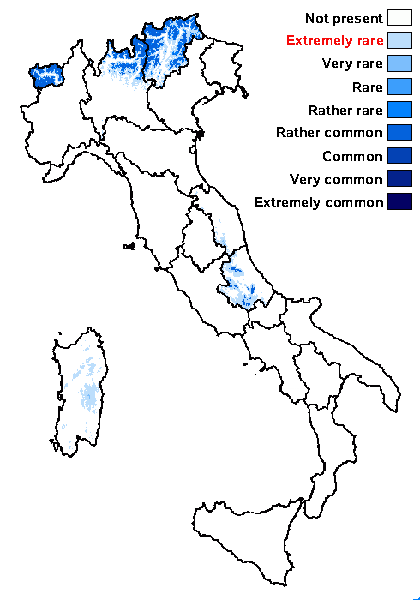
Predictive model
Herbarium samples
Growth form: Crustose
Substrata: rocks, bark, soil, terricolous mosses, and plant debris
Photobiont: green algae other than Trentepohlia
Reproductive strategy: mainly sexual
paras crustose and foliose lichens
Commonnes-rarity: (info)
Alpine belt: rather common
Subalpine belt: rather rare
Oromediterranean belt: very rare
Montane belt: extremely rare
Submediterranean belt: absent
Padanian area: absent
Humid submediterranean belt: absent
Humid mediterranean belt: absent
Dry mediterranean belt: absent

Predictive model
| Herbarium samples |
 INDEX FUNGORUM
INDEX FUNGORUM
 GBIF
GBIF
 DOLICHENS
DOLICHENS
